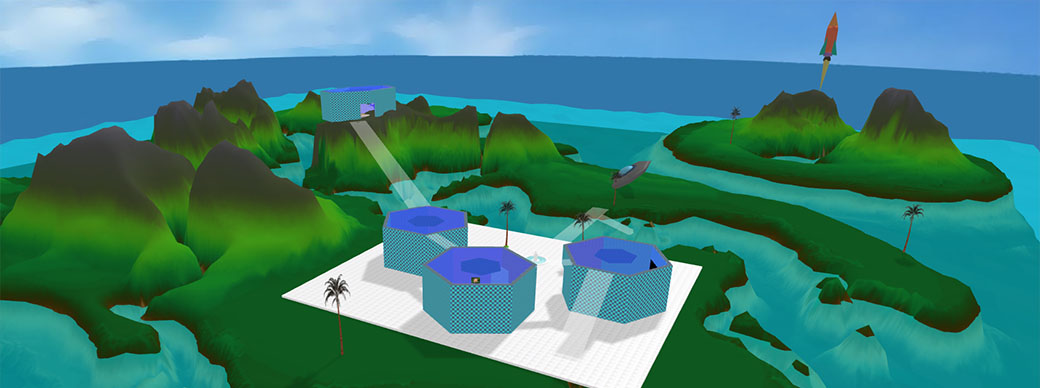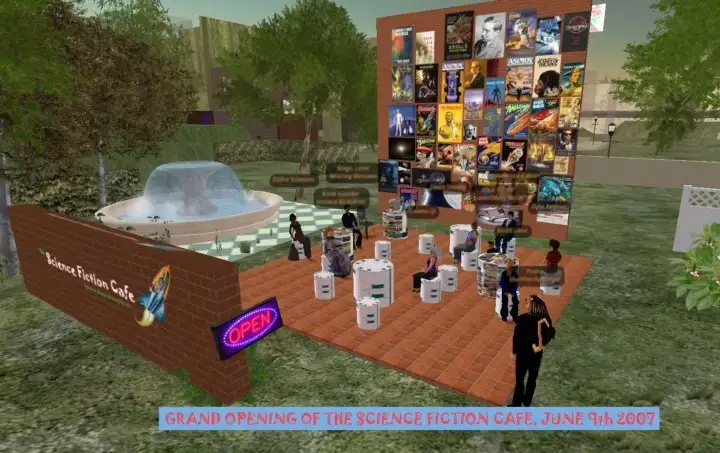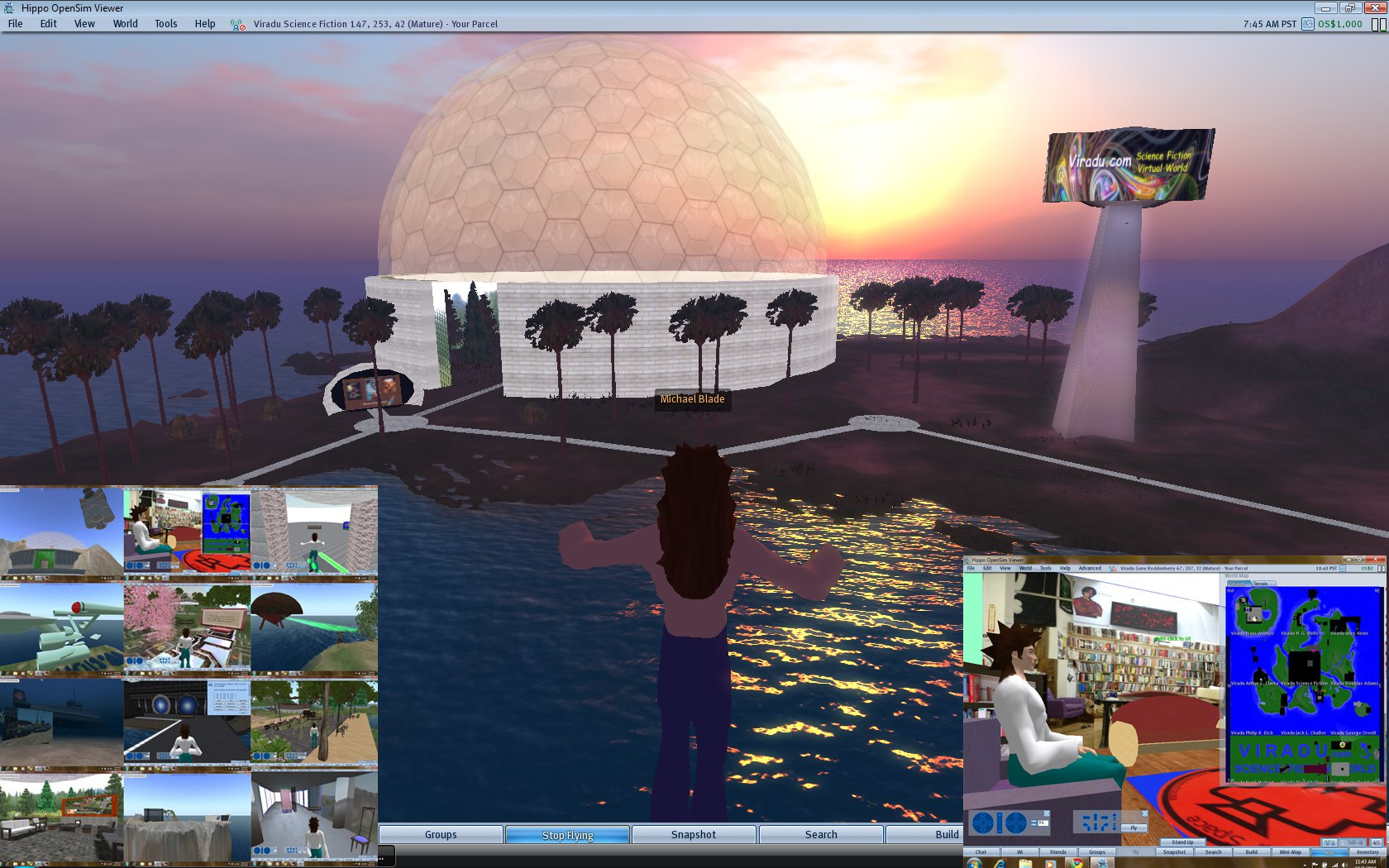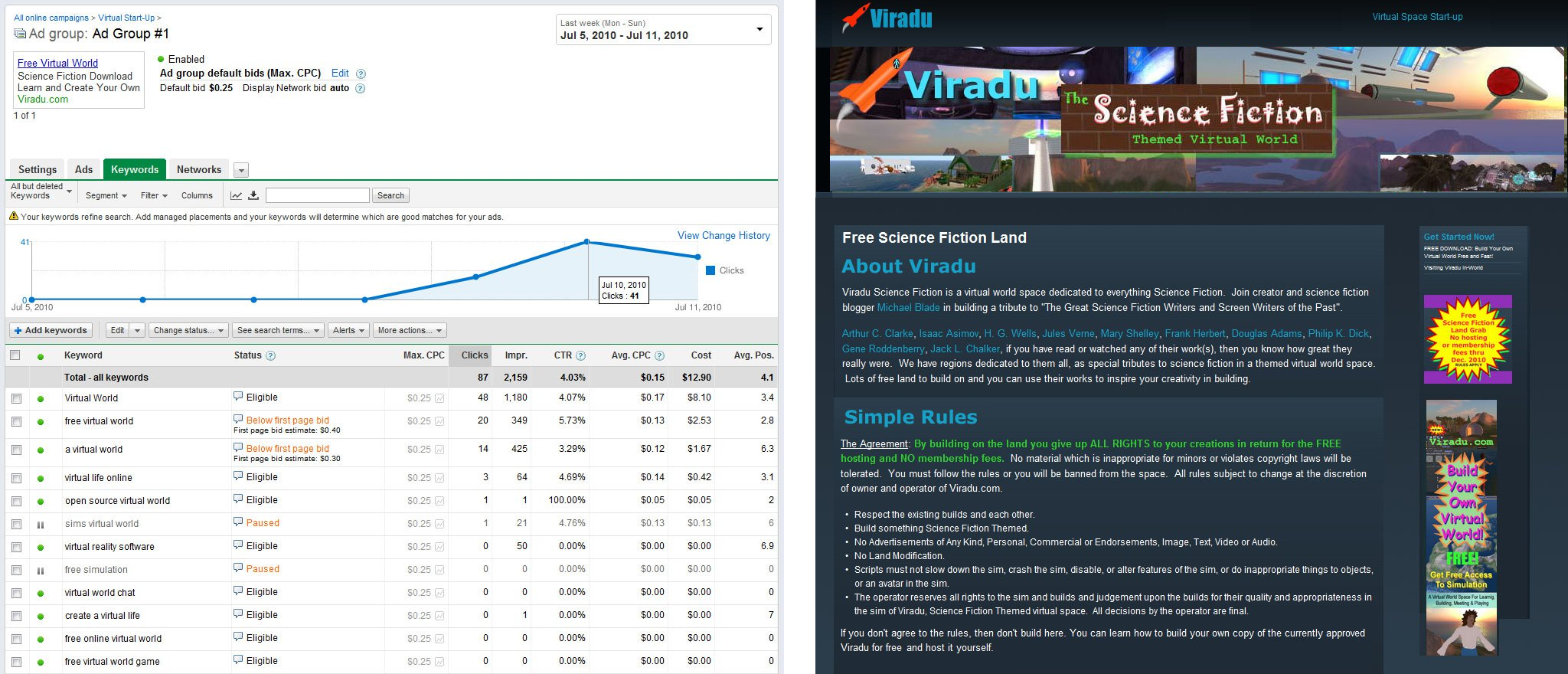
Advanced Hello World
Where to begin with VR in a browser? Here is a simple example from my free book.
 Rocket Virtual by Michael McAnally
Rocket Virtual by Michael McAnally

Where to begin with VR in a browser? Here is a simple example from my free book.

My base template for starting Social VR projects (2022).

Since A-Frame wraps an instance of Three.js and follows the WebXR specification, it allows for VR and AR inside a headset device browser. Using simple HTML and some JavaScipt it makes for easy coding of immersive experiences.

Open Metaverse Virtual World Social VR Island Themed Space With WebXR A-Frame.

VR Galleries + NFTs = Art In The Metaverse.

My 360 Mind Place Web App. For Caputuring Immersive VR Moments. Free Open Source Code!

An example of a Social VR space themed as a hexoplex garden park meeting complex.

At the time of this writing “Metaverse” is a serious buzz world, VR seems almost old to some, and everybody is hot and very excited about AR, even though the hardware is still rare, and really very expensive.
Over a decade and a half now I’ve been playing with developing and creating virtual world spaces. I guess that makes me a VR World Builder.
The latest ones resemble a private island and a garden. Sometimes science fiction themed, sometimes art gallery themed. It even has multi-user VR headset capabilities, something I still call Social VR.

So why should you even care about my historical experiences in VR? Well, I've experienced many things on many different platforms and that gives me some unique insight into the emerging metaverse.
Way back when, June 9th, 2007, I started inside a virtual world platform called Second Life. I spent over $200 buying Linden dollars and land (an early version of a virtual currency and exchange system, predating crypto) and built a little sci-fi themed cafe. I held some meetings there with science fiction discussions, favorite authors, movies, etc. This was pretty advanced for the time, one individual even attended using the avatar of a Dalek!
Later I decided that I wanted my own seperate virtual world space not constrained by the rules of the platform I was based on (think walled gardens). So I moved to a open source server derivative of Second Life called Open Simulator.
Open Simulator could be hosted on a colaborative server composite virtual world platform called OSGrid. While running my server, one hacker decided to change the water level of the ocean before I had locked down those controls, and flooded the entire island in 50 feet of water. That and other inappropriate content created by other visitors made me create a set of rules governing what could be done in the virtual space.
Both Second Life and OSGrid are still in existence today! Don’t get me wrong, I had a lot of fun on both those platforms, but there was still some things that really bothered me.

You had to install and configure an executable viewer for the virtual worlds, all to get others inside and access to those VR worlds; which meant you had to explain how to install and setup those viewers to newbies (not a simple explaination).
At the time there was something called the Hypergates, basically stargate-like portals linking the seperate virtual world servers together in a common teleport transportation system (which sadly no longer exist).
So about 2013, I abandon my idea of a private sci-fi themed virtual world island and archieved all the data. Second Life enthusiasm was waning and it seems other VR platforms were competing for attention, but the actual hardware for immersive VR experiences was still not available or affordable to the consumer. I had experimented with using advertising in combination with my science fiction blog to draw in people, but it slowly became more expensive to maintain since it was free to join the world and I was not making any revenue for hosting, not even advertising.
At the time the cost was $60 a month for the server. I had originally thought that after I had built up enough of a following/membership, I could slowly move to a subscription model and that would support further growth.
It just seemed that not as many people where interested in building things inside a free virtual world space as I thought, tools for creatively doing that were complicated to learn, use, and time consuming. They were simply interested in other things, such as fast moving games. At the time virtual worlds really could not effectively provide that level of action feedback on a client-server type architecture, especially a single server. They were not designed for that purpose. There are still limitations on how many people can be present in one area of a virtual world platform without significant scaling. Think lots of cell phones with limited cell towers in a large concert senario in our real world, and you can see the problem. Not everyone will be able to have good service.
This article is not about solving these problems, so I'll move on . . .

I was still interested in VR develoment in general. So when something called WebVR (now deprecated), and later WebXR came on the scene, with the wonderful A-Frame entity component system; I jumped on the band wagon immediately!
Now its been years learning and reshaping my basic understanding of how to build virtual world spaces again, but this time using a browser as the viewer (Duh! But in crystal clear hindsight, a no brainer). Now even hardware VR headsets are capable of enhancing the over all immersive experience.
I'm excited to continue to build and enhance virtual experiences on my own independent platform for art and learning purposes (this time for $12 a month hosting), and have recently written a free PDF technical book on how to build your own, which can be downloaded here, or viewed online here.
As I look back at the end of 2022, I have some thoughts about the future . . .
Ultimately I'm interested in promoting an Open Metaverse. One that is not controlled by a few wealthy companies, but one that can be for all of humanity, rich and poor alike. Made from open source software based upon interoperable standards.
It is my belief that in the not too distant future there will exist many open source "sub-metaverse platforms" visited on WebXR enabled browsers and apps. That VR/AR headsets will continue to shrink in weight and cost, while increasing both in comfort and capability, ultimately culminating in BCI (Brain Computer Interfaces) to become adopted in the late 2030s. A large growing percentage of people will work and play inside the 3D immersive metaverse.
A huge variety of easy to use tools for content creation in these virtual spaces will evolve. We will ultimately interact with AI agent avatars by giving instructions for building out whole custom virtual spaces. A "transportation-commerce-exchange-system", using a block chain technology, will become a reality, allowing for the transfer of virtual assets (models, services, scripts) all interchangable and interoperable between sub-metaverse platforms (games, business, etc).
Perhaps you agree and would would like to contribute in making this kind of future a reality?
Very informative video by Ada Rose Cannon on WebXR.
Kyle Baker has started a very useful updated component directory for community developed A-Frame code that can be used in your projects. About C-Frame.
Lee Stemkoski, a professor of Mathematics and Computer Science, has a wonderful library of code samples that can be found here. Scroll down to find specific Quest Examples.
This is the release meeting video for Wolvic "Wolvic WebXR Browser - Assembling The Pack". The Wolvic GitHub repository is here.
A nice video experience by Cas of the Consumer Electronics Show this year in 2023. Included here because there is a lot of tech evolving as you can see. Starts 2 min and 13 seconds in.